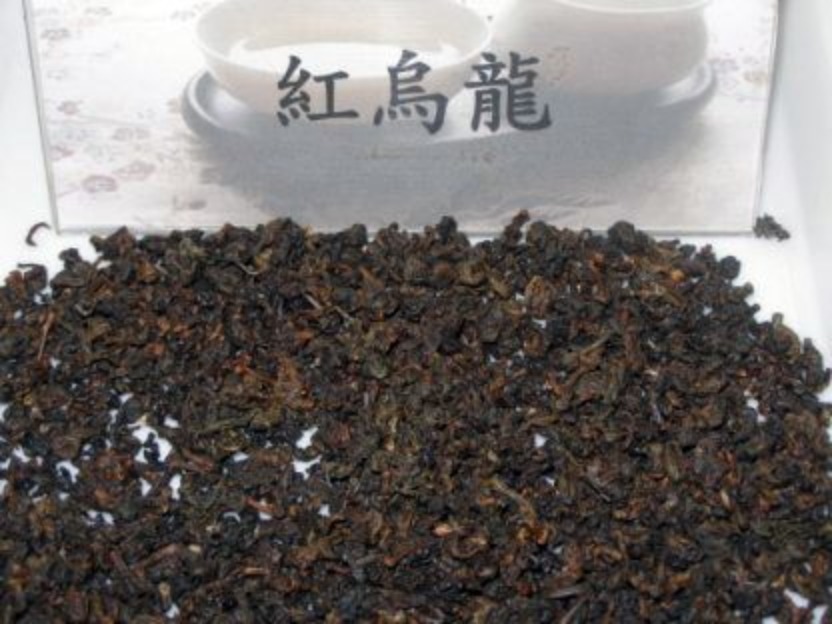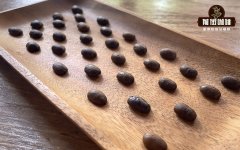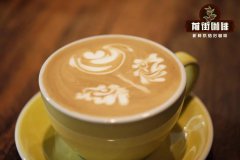Is "Red Oolong" too popular? The patent of tea production technology with emerging characteristics in Taiwan has been registered first by China.
The "Red Oolong" tea soup in Luye, Taitung, is bright, clear and fragrant, with a warm and sweet entrance and a special fruit fragrance. It is a new and popular tea in Taiwan in recent years. This unique fermentation technology invented by the Taitung branch of the tea industry has created an output value of 200 million yuan a year and exported to countries all over the world. Although Luye Hong Oolong has applied for trademark registration and geographical marks, last year's red oolong production technology was registered in China for technological invention patents. Luye tea farmers are worried that red oolong may not be sold in China in the future. Taitung County government and the tea industry attorney raised patent objections to safeguard the rights and interests of tea farmers. This article introduces the origin of Red Oolong for Wu Shengshun, researcher and secretary of the tea industry improvement field of the Council of Agriculture.

I. Preface
For example, if the bar-shaped bag tea is compared to a budding "young girl", Frozen Oolong Tea is a charming "lady", and Tieguanyin is a steady and capable "middle-aged man" who has gone through the vicissitudes of life. In that case, "Red Oolong" can be said to be a "chivalrous man" who is gentle, strong in martial arts, and hidden. Many people may not have heard of it, nor do they know it. Many tea friends on the Internet have asked what "Red Oolong" is. What kind of tea do you belong to?
In fact, it is a local characteristic oolong tea newly developed by the Taitung branch of the tea industry improvement farm of the Council of Agriculture, following the strip-shaped seed, Oriental Beauty, and hemispherical packaged tea. the appearance is spherical, black and bright, and the water color is orange and red, and the soup color is bright, clear and glossy. Sweet, sweet, smooth, cold and hot tea. This paper introduces the development and quality characteristics of Red Oolong.
II. Development background
The development of Taiwan's tea industry can be traced back to the beginning of the entrepot trade in the Dutch occupation era, to the ancestors from the coastal provinces of the mainland in the late Qing Dynasty, passing on tea varieties, planting methods and tea-making techniques to Taiwan, which has a history of hundreds of years. Oolong tea produced in Taiwan did not leap onto the international stage until more than 140 years ago when the Englishman John Dodd marketed tea from Taiwan to New York in the name of Formosa Oolong Tea. Since then, Taiwan's ancestors have made continuous innovation and improvement, and successively introduced strip-shaped packaged tea, oriental beauty, and hemispherical packaged tea, which has become a characteristic tea representing Taiwan.
In 1981, the regulations on the establishment of tea factories were abolished, and tea gradually changed from export to the domestic market. with the slogan of self-production and self-sale, tea farmers, in conjunction with the government's marketing promotion, hemispherical tea mats rolled up Taiwan became the mainstream of the tea market. and create many well-known regional characteristics of oolong tea, Alishan and Lishan and other alpine tea.
However, due to increased production costs and restrictions on planting land, Taiwan tea farmers transferred to Southeast Asia and Chinese mainland to invest in production, and with the varieties, technology, and funds of hemispherical packaged tea, they successfully introduced hemispherical packaged tea to the world tea market. it has also led to the flooding of these "customized" Taiwan tea markets in Taiwan's tea market. Due to the same varieties and technologies, coupled with low production costs, the greatest impact on Taiwan tea is in the middle and low altitude tea areas. In the face of these impacts, the tea area can only innovate and establish a brand, and the development of characteristic tea is the best way to face the challenge.
Third, make a fortune from Taitung tea area
How deep is the influence of table tea? Is it really hard to evaluate?
However, some clues can be seen from the evolution of Fulu tea in Taitung County in recent years. Taitung Tea area is a relatively late tea area in this province. Around the 1960s, it began to grow tea on a small scale, and at the initial stage, it was mainly planted to make black tea. Later, due to the bottleneck encountered in domestic tea export at that time, packaged tea became the mainstream of the market. On the train for the production of packaged tea, all of them were replanted with small leaves to produce packaged tea. It can be said to be the peak period of Taitung tea from 1980 to 1995. at that time, the central and southern tea areas and alpine tea did not form a climate, occupying the advantage of the innate environment. The late winter and early spring tea produced in Taitung tea area gradually attracted the attention of tea merchants and tea manufacturers. They came to Taitung to engage in tea processing and wholesale business, laying a solid foundation for the development of Taitung tea industry. The area of tea was once as high as 5-600 hectares.
After 1996, Fulu tea entered a bleak period, the area of tea area gradually decreased, from 50 or 60 tea factories to more than 10 at present, the area of tea garden also decreased to about 200 hectares, the development of tea area is facing a new survival test. The reasons for the sudden decline of tea gardens are complicated: first, tea farmers are responsible for growing tea, and tea cyanines are sold to tea factories for processing. Under the opposition of quality, quantity and marketing methods, it is difficult to strike a balance between tea farmers and tea factories. As a result, tea farmers cannot buy tea production plants, and farmers have to switch to other crops. Second, the tea area is lack of characteristic popularity, the tea produced is the same as other tea areas, and the market can not be developed. Third, it is influenced by imported table tea.
Fulu tea area is the largest and most important tea area in Huadong county, and its survival is facing difficulties. How should tea area break through? Relying on the joint efforts of production, government, and school, the Taitung branch of the tea industry improvement field is to actively guide the transformation and upgrading of the tea area, comprehensively strengthening the physique of the tea industry from a "production-oriented" tea industry to a "knowledge-based" tea industry. Start from the three major links of special variety planting and processing, quality certification and brand marketing to create a competitive niche.
In terms of special variety cultivation, Huadong is already the largest producing area of Daye Oolong varieties in Taiwan, and Yongkang Mountain wild tea is also being selected and is expected to become another specialty in the eastern tea area. At present, tea processing has launched honey-scented black tea, honey-scented green tea, red oolong and other teas, which are gradually loved and affirmed by consumers. Among these kinds of tea, honey-scented black tea has become a specialty tea in Wuhe tea area of Ruisui Township, Hualien County. The first choice for consumers to come to Wuhe Village is honey-scented black tea. Wuhe Village has become the hometown of "honey-scented black tea", and the area of tea area has gradually increased.
"Red Oolong" is the Taitung branch team of the tea industry improvement market. in order to break through the predicament of the middle and low altitude tea areas, summer and autumn tea is used to produce oolong tea with a relatively heavy degree of fermentation. Because the tea soup is orange-red, bright and clear, it is as bright and clear as black tea. It is specially named "Red Oolong". Since it was launched in Luye Township, Taitung County in 2008, it has gradually attracted the attention and love of consumers, and the market is gradually expanding, even in Chinese mainland, which is expected to become a new characteristic tea in Taiwan.
IV. Processing characteristics of Red Oolong
The basic process requirements of traditional oolong tea processing are withering, stirring, frying, kneading, drying and other important steps. As long as these processes are available in the processing process, it can be called "oolong tea in a broad sense". Taiwan's Wenshan Bao, Tieguanyin, Oriental Beauty, Frozen Oolong Tea, Gaoshan Tea and hemispherical Bao Tea can all be called oolong tea in a broad sense. The difference is just the degree of fermentation, which is classified as green tea among the six major tea categories in China.
The production of high-quality tea cyanine raw materials is an important key point, but the conditions of tea cyanine are easily limited by seasons, varieties, diseases and insect pests and other factors. The conditions for the production of red oolong tea buds and leaves are not limited by the above factors. Tea garden production is a safe and hygienic tea without spraying pesticides, which is suitable for promotion in various seasons and organic tea gardens.
The biggest difference between red oolong and traditional oolong tea is in the fermentation stage, which is the biggest characteristic of red oolong different from oolong tea, and it is also a new breakthrough in revolutionary change of production process. The characteristic tea newly created by "Red Oolong" combining the processing characteristics and quality characteristics of oolong tea and black tea has the highest degree of fermentation among oolong teas at present. Red Oolong is suitable for production in various tea areas in Taiwan and can be fully utilized in the productive season of tea cyanine in summer and autumn to increase the income of farmers. In addition, the condition of tea cyanine is not easily limited by diseases and insect pests and seasonality, so it is suitable to be promoted in tea gardens at all elevations and organic and non-toxic tea gardens.
In addition, red oolong can also be produced by machine to produce refrigerated tea and canned tea, which has great potential for development. Some people say that a red oolong is a traditional red water oolong, and we can tell you clearly that whether it is the processing method or the appearance, shape, aroma and taste of the finished product, the two are completely different. The attached table is the difference between the red water oolong and the red oolong.
Fifth, the quality and characteristics of Red Oolong
How to describe the quality and characteristics of red oolong, the tea man Mr. Hong Feiteng wrote that "fresh fruit aroma of red tea, mellow aftertaste, two leaves handmade, cold taste through the heart" is the most vivid. Today, the characteristics of Red Oolong are described as follows:
1. The red oolong has a hemispherical shape, dark red with luster.
2. The tea is amber, orange and red, bright and clear like the color of black tea, but the taste is oolong tea.
3. The tea is thick and ripe with ripe fruit aroma, mellow and smooth taste, full of activity, bubble resistance and glycol. it is the best material for cold-brewed tea. Red Oolong Sheng Jin to quench thirst has great potential for development in the foam tea and tea beverage market.
4. Red Oolong belongs to oolong tea with heavy fermentation and emphasis on baking, emphasizing the glycol and water color of tea taste, which can have light ripe aroma, but can not produce heavy ripe taste or scorched taste. It is not easy to deteriorate after long-term storage, so it can be used as an old tea store.
5. Tea cyanine conditions are not easily limited by seasons, varieties, diseases and insect pests and other factors, is a safe and hygienic tea, tea garden can not be sprayed with pesticides, suitable for promotion in all seasons and organic tea gardens.
6. The characteristic tea newly created by red oolong tea combining the processing characteristics and quality characteristics of oolong tea and black tea can be said to be the highest fermentation degree among oolong tea at present.
7. The biggest characteristic of red oolong, which is different from oolong tea, is that the processing process is simple, there is no need to stay up late to make tea, focusing on the withering and mixing process, revolutionary changes in oolong tea, and new breakthroughs in the production process.
Red oolong appearance.
VI. Conclusion
Taiwan is known as the "kingdom of oolong tea". Oolong tea is not only the pride of Taiwan, but more importantly, Taiwan has exerted its production technology of oolong tea to the extreme, creating a new direction and technology for "hemispherical tea". However, Taiwan has also moved this new technology and new direction to Vietnam, Chinese mainland, Thailand, Indonesia and other places. This is not only a joy, but also a worry. The good news is that the Taiwanese have exerted their oolong tea processing technology to the extreme and spread it to the whole world. The worry is that it will deal a serious blow to the development of Taiwan tea.
In the face of these challenges, we think that Taiwan's tea industry is moving towards diversified development, and the establishment of tea area characteristics is a direction that can be considered, especially towards the development of safe, hygienic and pesticide-free tea, which is worth vigorously popularizing. Honey fragrant tea and red oolong are the best choices. At present, both of these two tea processing technologies can be transferred, and interested companies are welcome to go to the Taitung branch of the tea industry improvement market.
Important Notice :
前街咖啡 FrontStreet Coffee has moved to new addredd:
FrontStreet Coffee Address: 315,Donghua East Road,GuangZhou
Tel:020 38364473
- Prev

Deep-baked Indonesian Manning coffee beans how to make it good? Golden Manning coffee hand brewing parameters
The name Mandenin Coffee is also famous. Many people like the mellow and fragrant coffee, while others admire it but stop at its taste. Indeed, deep-baked coffee like Mantenin is easy to get bitter. So, how can this kind of beans taste good? The key to making a good cup of coffee is to know yourself, know your enemy and understand the letter of coffee.
- Next

What is cappuccino coffee? how to make a good cappuccino?
Cappuccino coffee, is in the coffee shop must order a lot of Italian coffee, rich milk foam and thick coffee, sweet with mellow coffee taste will make people think of Pianpian, linger. Do you know how such a delicious cappuccino coffee, especially the beautiful flowers in the cup, is made? Qianjie is honored to have a look with you.
Related
- Beginners will see the "Coffee pull flower" guide!
- What is the difference between ice blog purified milk and ordinary milk coffee?
- Why is the Philippines the largest producer of crops in Liberia?
- For coffee extraction, should the fine powder be retained?
- How does extracted espresso fill pressed powder? How much strength does it take to press the powder?
- How to make jasmine cold extract coffee? Is the jasmine + latte good?
- Will this little toy really make the coffee taste better? How does Lily Drip affect coffee extraction?
- Will the action of slapping the filter cup also affect coffee extraction?
- What's the difference between powder-to-water ratio and powder-to-liquid ratio?
- What is the Ethiopian local species? What does it have to do with Heirloom native species?

